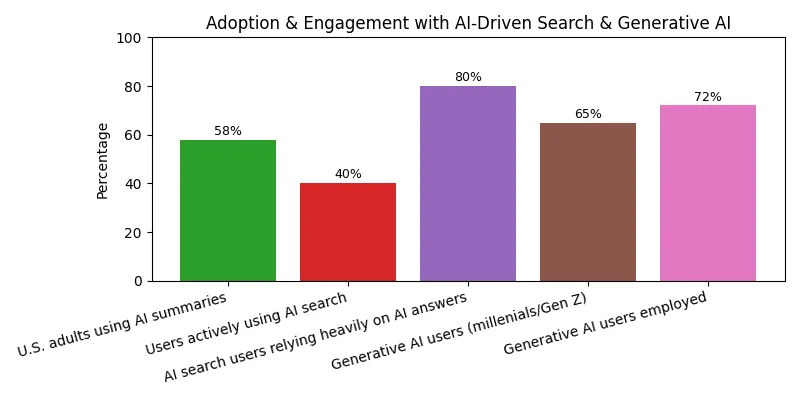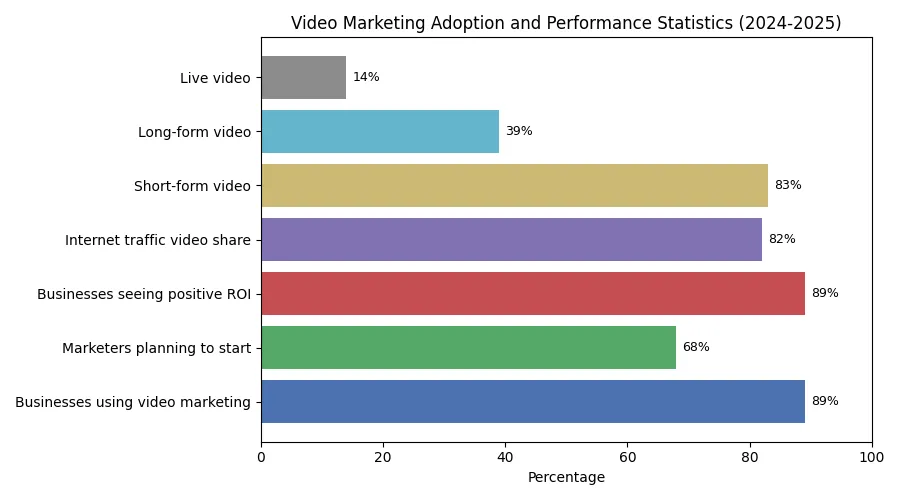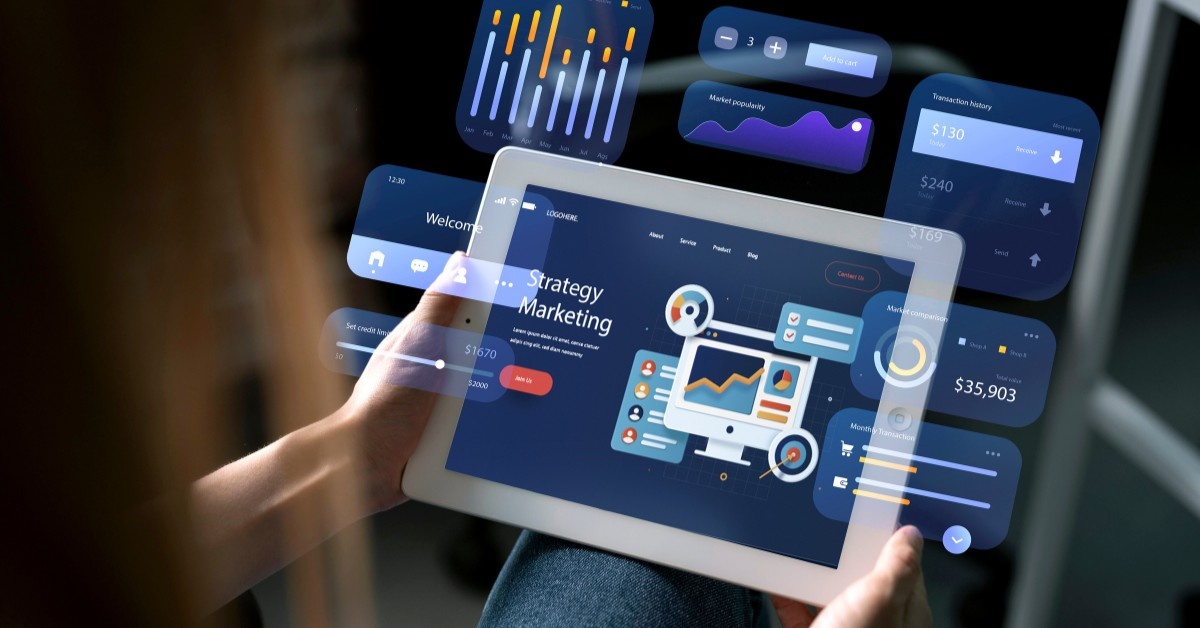How To Plan Your Content Strategy With AI Search in 2025?
By the end of 2025, Google will be answering your customers’ questions before they ever see your site. If your content can’t earn a mention in AI Overviews, it might as well be invisible.
That’s the new reality, which is very difficult for SEO experts to digest. Zero-click search has pushed B2B brands to rethink how they create content and publish it online.
However, a content plan that lacks audience segmentation, customer persona and GTM strategy will likely get ignored and won’t even rank well in SERPs.
At the same time, India’s ever‑expanding festival calendar and global B2B buying cycles demand tailored messages throughout the year.
As marketers responsible for growing ROI, we can’t afford to rely on outdated playbooks or a generic yearly calendar.
This blog article helps CMOs and marketing heads reassess their content strategy, utilising AI mode and diversifying their content format to reach a wider audience.
Which AI trends are triggering a mid-2025 content strategy reset?
The way people consume information has changed quickly:
- AI‑driven search adoption. Survey shows that 60% of US adults now rely on AI summaries; 80% of them trust those answers for nearly half their searches. If you’re not cited, you’re out.
- Video content is eating the internet. Video will make up 82% of traffic in 2025. This is not a side channel anymore; it’s the main stage.
Long‑form isn’t dead either; B2B CEOs are investing in podcast setups more than ever. Video content attracts more viewers because people prefer watching and listening to content over reading a 25-page report.
- Search is evolving fast. Search is evolving fast. Under E-E-A-T and MUVERA, only people-first, original, multimodal content gets surfaced. Commodity blog posts are dead. With AI detection becoming more sophisticated, low-effort or AI-generated filler content is flagged, trust signals drop, and rankings slide fast.
To understand why content optimisation for AI matters, look at adoption rates:

How to write for AI Overviews and LLM‑driven search
The AI era doesn’t replace SEO; it raises the bar. Google’s guidance is clear:
- Create unique, non‑commodity content. Focus on answering specific questions with original analysis, case studies and expert opinions.
- Deliver a great page experience (UI/UX). Slow, cluttered pages or unnecessary pop‑ups frustrate users.
- Meet technical requirements. Allow Googlebot to crawl and index your pages.
- Use structured data. Add a schema that mirrors visible content to help machines understand context.
Use FAQ, How‑To and Product markup where it is relevant.
- Go beyond text. Support your article with images, charts and videos. Google notes that AI experiences rely on multimodal signals.
- Value engagement over clicks. AI Overviews may reduce raw traffic but deliver visitors who spend more time on your site. Define conversion metrics (leads, sign‑ups, product enquiries)
- Keep watch on the latest updates and Google news. Search and user expectations keep changing. Monitor questions your audience asks and update content accordingly.
- Start with a clear problem statement. Add a concise answer up front, and then layer detail. Use headings and bullet lists to help LLMs and people navigate your article.
Multi‑channel tactics: email, newsletters and social ads
Top‑of‑funnel success requires more than organic posts. Here’s how to combine channels with SMART goals:
- Specific: Define your exact audience segment, budget threshold, and pain point. Avoid “everyone” and choose a niche that matches your strongest value proposition.
- Measurable: Identify metrics that directly tie to pipeline or revenue, not vanity numbers like impressions.
For instance, aim for 40 qualified leads from a Q2 LinkedIn ad campaign, with a minimum 25% of them booking a sales call within 14 days.
- Achievable: Match output to your resources. Avoid overcommitting to daily content drops if your team is small; focus on one high-impact deliverable you can execute flawlessly.
For example: "Instead of five webinars this quarter, host one high-value session with a Fortune 500 client case study, then repurpose clips for targeted email and social campaigns."
- Relevant: Align with business priorities, seasonal demand, and the decision-making cycles of your buyers
- Time‑bound: Set a clear start and end date for each initiative, including checkpoints for adjustments.
For instance, launch a three-week ABM email sequence from Sept 1 to Sept 21 targeting IT directors in Southeast Asia, with weekly performance reviews to refine messaging.
Example scenario: A cybersecurity SaaS provider, CyberShield Pro, is rolling out a new threat intelligence platform tailored for mid-size banks in Singapore, Malaysia, and Indonesia.
Sample subject lines for the ABM sequence:
- Is your bank’s threat detection ready for 2026’s AI-driven attacks?
- New compliance mandates in SEA: How to stay ahead
- See what your current security tools aren’t catching
Sequence outline:
- Week 1 (Awareness): Highlight regional cybersecurity trends and compliance changes.
- Week 2 (Consideration): Share a case study showing 40% faster breach detection in a peer bank.
- Week 3 (Decision): Invite them to a private demo with their compliance officer present.
In practice, combine:
- Targeted emailers: Utilise marketing automation to create email flows and various triggers (open, click, signup, download, form submission, etc.). Keep copy succinct and personal.
- Newsletters: Offer curated insights, behind‑the‑scenes stories and case studies. Always include a single clear call‑to‑action.
- Social ads: Run platform‑specific creatives. For professional audiences, LinkedIn Lead Gen Forms work well. For product awareness, Instagram and YouTube ads with retargeting drive efficient reach.
Cadbury India’s hyper‑personalised Diwali campaign
Cadbury’s “Not Just a Cadbury Ad” is an example of video content and AI working together to drive real ROI. During Diwali, Cadbury used machine learning to insert the names of local shops into pre‑recorded commercials featuring actor Shah Rukh Khan.
The ads encouraged viewers to buy sweets from neighbourhood stores hit by the pandemic. Reports indicate that the hyper-personalisation led to around a 35% increase in sales for participating small retailers.
What worked:
- Cadbury tapped into a festive emotion (Diwali gifting) and a social cause (supporting local businesses).
- The campaign used AI to scale personalisation without losing authenticity – each shop owner received a customised video to share on WhatsApp and Instagram.
- Integration across TV, YouTube and social channels extended reach and generated earned media buzz.
Video content: your unfair advantage
“Video is now the front door to your buyer’s journey. In 2025, if you leave it shut, they’ll walk straight to your competitors.”
These stats provide the base for understanding the pace at which video content creation is being adopted globally:
- Adoption and ROI: 89% of businesses already use video, and 89% say it delivers a positive ROI.
- Format matters: Short-form dominates with 83% of marketers using it, yet 39% use long-form and only 14% venture into live video. Live video is still nascent, but 46 % of brands and marketers use it as a social media tactic.
- Traffic share: Video is projected to account for 82 % of all internet traffic in 2025. Consumers are not just scrolling; they are watching.
Below is a visual summary of Wyzowl’s Video Marketing Statistics 2025:

To understand why content optimisation for AI matters, look at adoption rates:

AI as a Force Multiplier, Not a Crutch
In 2025, marketing leaders are under pressure to move faster without diluting brand trust.
The following measures keep AI as an accelerator while safeguarding brand authority -
- Research Intelligence
Leverage LLMs to scan market reports, surface competitor moves, and extract key data. Always verify against credible primary sources like Google, Microsoft, or HubSpot before using the insight in client-facing material. - Strategic Outlining
Use AI to generate structural options for campaigns, blogs, or presentations. Then reshape those outlines around your audience’s pain points and buying triggers so the output is anchored in business reality, not generic templates. - Humanised Output
Every piece of final content should pass the “read-aloud” test. If it doesn’t sound like a trusted industry voice speaking directly to a client, rework it. Your tone and judgment are what give AI-generated drafts market credibility. - Ethics at the Core
Always attribute data, cite sources, and disclose when AI played a role. Ethical transparency is now a ranking and trust signal, not just a compliance box. - Upskilling the Team
Invest in prompt engineering and critical evaluation skills across your marketing team. Generative AI can open doors to scale, but it’s your strategy, discernment, and lived experience that keep those doors from leading to dead ends.
Bottom Line
A significant share of your audience is already using AI tools to summarise, search and resolve their query. Planning high‑intent user-specific content for AI Overviews and diversifying formats (text, video, interactive experiences) positions your brand to be referenced by the algorithms.
Right now, AI is serving your audience with your competitors’ answers. Every day you’re absent is a day they win this competition.
Do you want more traffic?

How to Scale Personalisation in ABM Without Losing Focus?
.png)
Why Small Tasks Are the Next Big Revolution in Business Efficiency?











